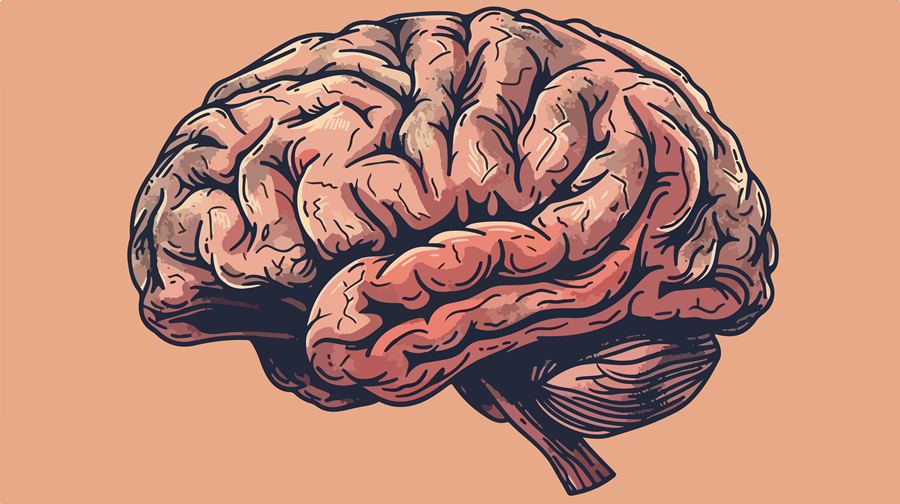Common street terms associated with drug use and cravings are “feening” and “fiending.” While they are standard slang terms, the risks associated with these intense drug cravings can be severe.
Cravings for a substance are a common sign of addiction or withdrawal. When someone keeps using and craving a substance consistently over an extended amount of time, it can lead to harsh health effects on the mind and body.
In the rest of this article, we’ll explain what feening and fiending are in more detail, the symptoms associated with it, and resources that can help with recovery from addiction.
What Does “Feening” Mean?
The terms feening or fiending are used to describe very intense cravings for recreational drugs. When someone is experiencing this, it can feel almost uncontrollable and may even cause someone to make irrational decisions to get drugs and calm the cravings.
When treating addiction, it’s important to understand the effects of cravings to get the best results that help maintain long-term sobriety.
Research shows that patients seeking treatment for substance use disorder who have used recreational drugs in the last 30 days are much more likely to experience cravings since the drugs are still in their system.
Not only that, but research also shows that physical withdrawal symptoms like cravings can cause relapse rates of up to 85%, especially when the withdrawal symptoms aren’t properly managed.
That’s why going through a medical detox during recovery is often a good choice. Medical detox programs provide around-the-clock care and assistance from trained healthcare professionals to help manage withdrawal symptoms and keep you feeling as comfortable as possible.
Symptoms of Feening
Many common addiction symptoms are signs of feening or fiending. Typically, those symptoms will fall under the categories of physical and psychological.
Physical Symptoms of Feening
Misusing or abusing drugs can cause physical symptoms that affect the body in many ways. The physical effects of drugs may also be referred to as experiencing physical dependence when you experience withdrawal symptoms like shaking or tremors after you stop using a substance.
The physical symptoms of feening consist of:
- Shaking
- Tremors
- Sweating
- Nausea
- Vomiting
- Diarrhea
- Muscle aches
- Fatigue
Psychological Symptoms of Feening
Someone who is feening or fiending for drugs may also experience mental symptoms that affect their well-being. The mental effects of drug use can also cause what’s called psychological dependence, when you feel like you can’t function normally without using a substance.
The psychological symptoms of feening include:
- Irritability
- Mood swings
- Compulsive behavior
- Anxiety
- Depression
- Confusion
- Disorientation
- Hallucinations
- Delusions
The Brain and Cravings

One of the most significant effects of ongoing substance abuse or misuse is how it affects the brain.
When someone takes a recreational drug, many of them stimulate the central nervous system and cause a big release of neurotransmitters like dopamine, serotonin, and norepinephrine. These are also referred to as your “feel-good” hormones.
One of the most influential hormones of that group is dopamine, which is associated with your brain’s reward system. When you take drugs or drink alcohol, your brain releases a lot of this hormone, which makes you feel good when you first use a substance.
However, over the long term, especially if you use high doses of substances, your brain gets used to the drugs releasing large amounts of hormones. Then, it slows down their production to recover once the drugs start to leave your system. That’s a big part of why you might start to feel down and out of it after the drugs wear off.
Research has shown that it can take the brain up to 14 months to get dopamine transporter levels back to a near-normal level after recovery from substance abuse.
This is why longer-term treatment solutions like aftercare, continued therapy, and following 12-step programs are often a good idea after completing a residential treatment program since your body is still recovering.
Statistics also show that relapse rates remain high (up to 65%) for 12 months after stopping drug use. That’s why a proper treatment program that helps patients prepare things like a relapse prevention plan and life skills to manage triggers that cause cravings is essential for the best results.
Consequences of Feening
Fiending or feening for drugs can lead to serious consequences when left untreated.
Since the drug cravings can feel uncontrollable and severely uncomfortable, it can lead to those struggling to take irrational or dangerous actions to get more drugs. That can include theft, visiting dangerous areas, or taking loans they can’t repay. This can lead to major legal and financial consequences if it keeps happening.
Long-term drug use that causes severe cravings can also lead to major health complications. This can include damage to vital organs like the liver, kidneys, or heart.
Health issues like lung or heart disease, stroke, cancer, or mental health conditions are also more likely to occur as drug use persists.
Coping with Feening and Recovery Options
The best way to manage the symptoms of feening or fiending is to seek treatment for drug addiction. Many recovery options are available that can help in the process.
Most treatment programs will begin with a medical detox. This will involve ending drug use and managing the withdrawal symptoms and cravings that come after. With a full team of health professionals that can help around the clock, medical detox can make it more comfortable during this difficult period to prevent relapse.
Along with detox, a full residential treatment program is often a good idea. Residential treatment allows you to stay at a treatment center for a duration of time while you participate in therapy, support groups, and skill-building sessions that will help you maintain sobriety long-term.
Additionally, many treatment centers offer aftercare services once you’ve completed a residential program. This may include reporting back to the treatment center for continued therapy, scheduled check-ins, or guidance to find local resources that can help with continued recovery and support.
Conclusion
The symptoms of feening or fiending can feel very intense when someone is struggling with addiction. That’s why getting proper treatment and support to make a full recovery is so important to avoid the potential consequences and health risks that are associated with ongoing addiction.
When you need support, the United Recovery Project is here to help. We offer medical detox and residential care services for alcohol and drug addiction. Our knowledgeable medical team can provide a full diagnosis and help you plan a tailored treatment program that fits your needs.
Contact us today to learn more about getting started.
References
- Cless, Mallory M, et al. “Craving among Patients Seeking Treatment for Substance Use Disorder.” Discover Mental Health, vol. 3, no. 1, 8 Nov. 2023, https://doi.org/10.1007/s44192-023-00049-y.
- Beniwal, RamPratap, et al. “Relationship between Craving and Early Relapse in Alcohol Dependence: A Short-Term Follow-up Study.” Indian Journal of Psychological Medicine, vol. 40, no. 4, 2018, p. 315, https://doi.org/10.4103/ijpsym.ijpsym_558_17.
- US Department of Health and Human Services. “THE NEUROBIOLOGY of SUBSTANCE USE, MISUSE, and ADDICTION.” Nih.gov, US Department of Health and Human Services, Nov. 2016, https://www.ncbi.nlm.nih.gov/books/NBK424849/.
- Recovery Research Institute. “The Brain in Recovery – Recovery Research Institute.” Recovery Research Institute, 2012, https://www.recoveryanswers.org/recovery-101/brain-in-recovery/.
- Evren, Cüneyt. Factors Related with Relapse in Male Alcohol Dependents: 12 Months Follow-up Study. https://dusunenadamdergisi.org/storage/upload/pdfs/1586353274-en.pdf.
- National Institute on Drug Abuse. “Addiction and Health.” National Institute on Drug Abuse, 22 Mar. 2022, https://nida.nih.gov/publications/drugs-brains-behavior-science-addiction/addiction-health.



